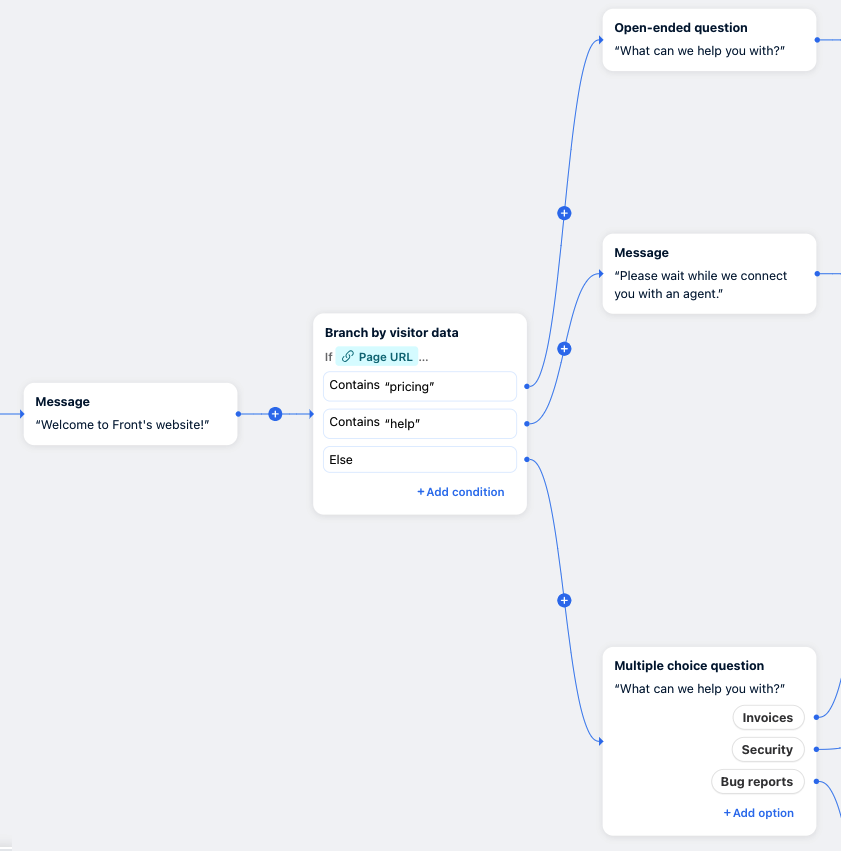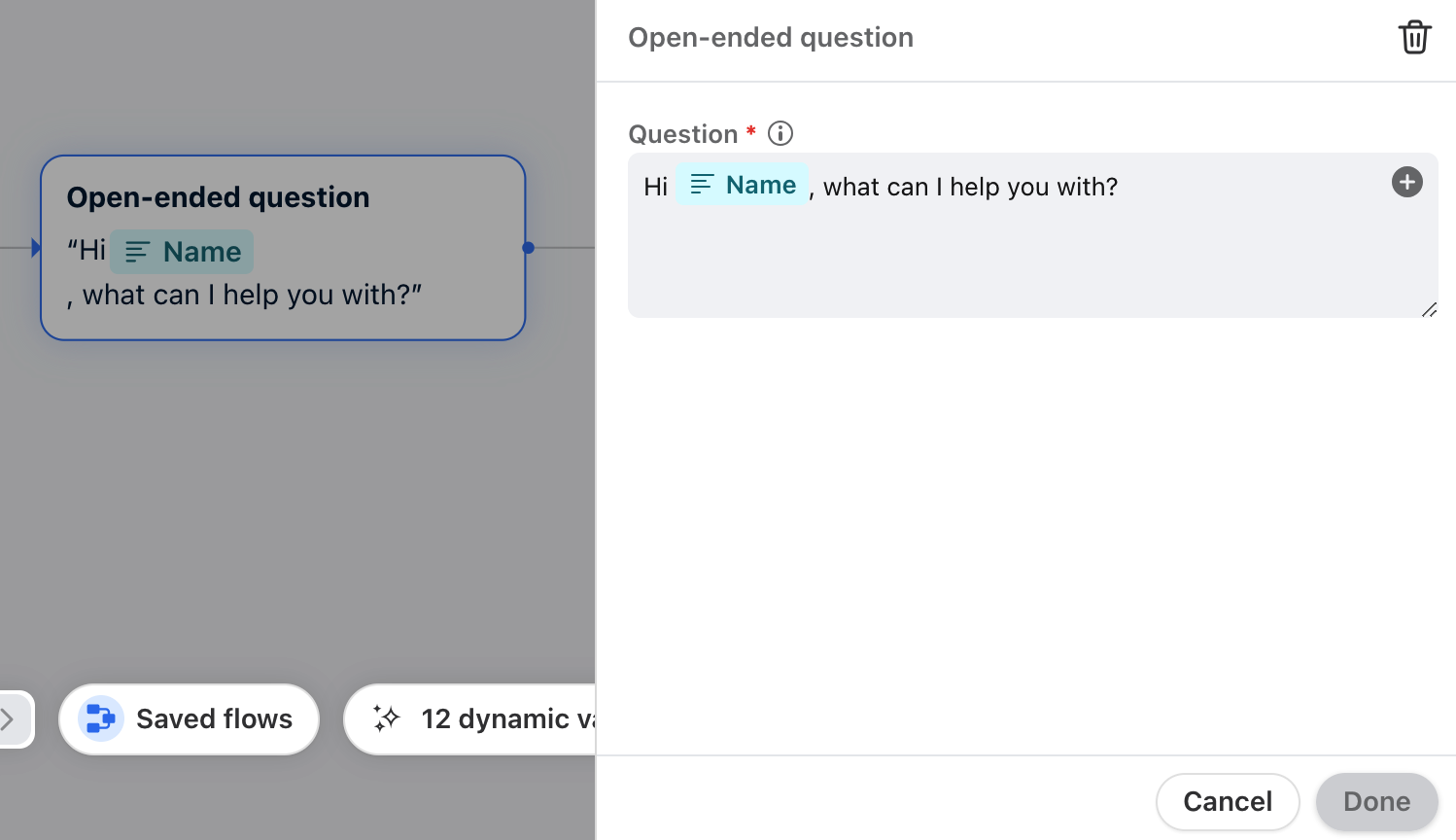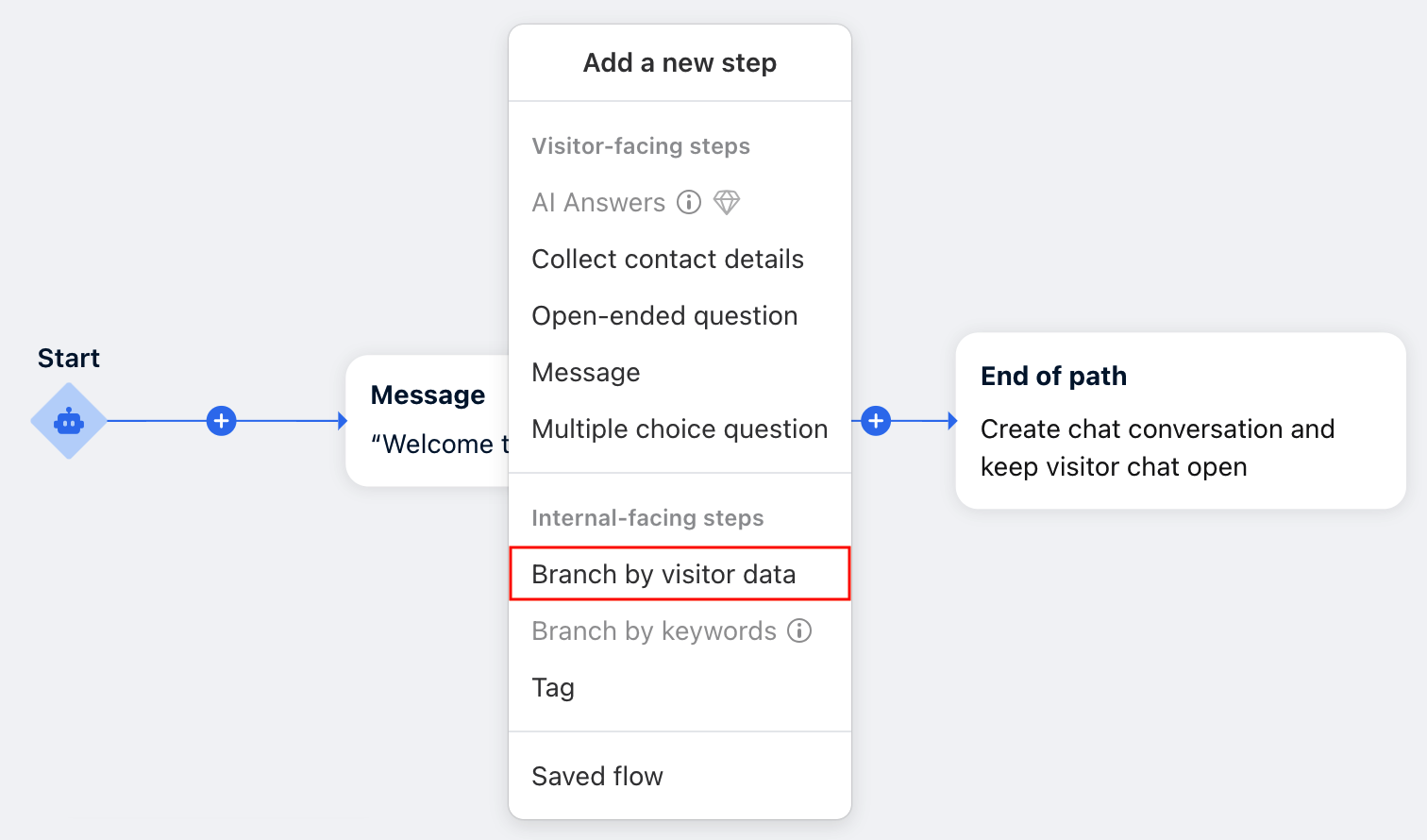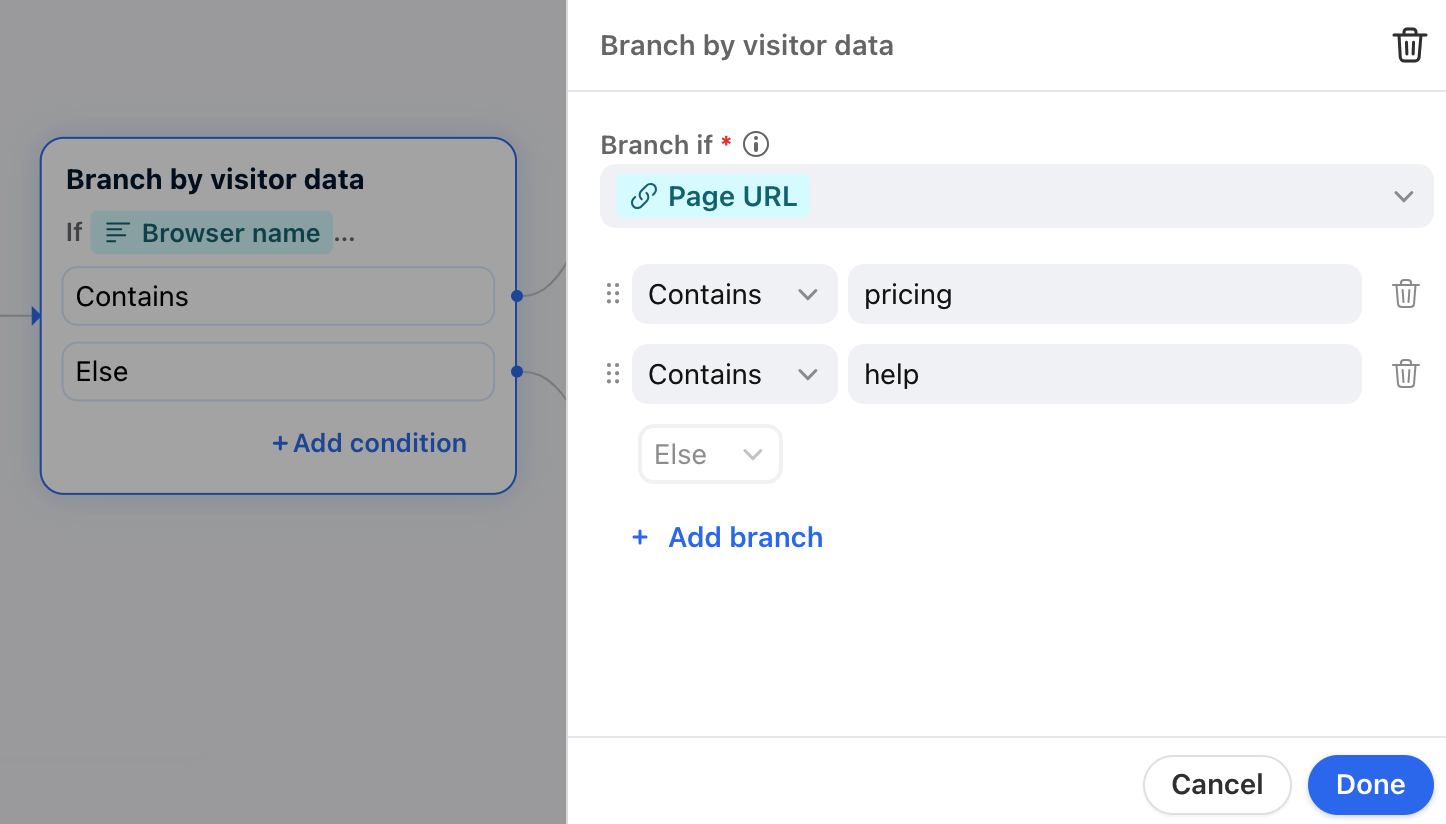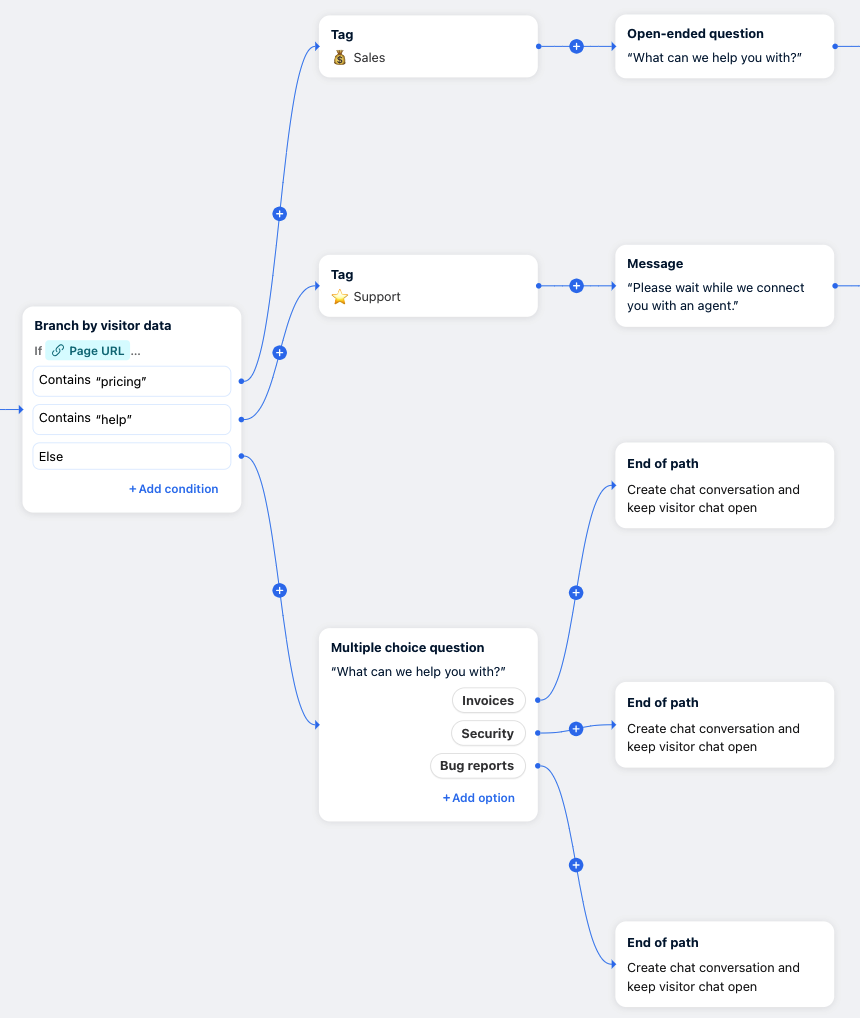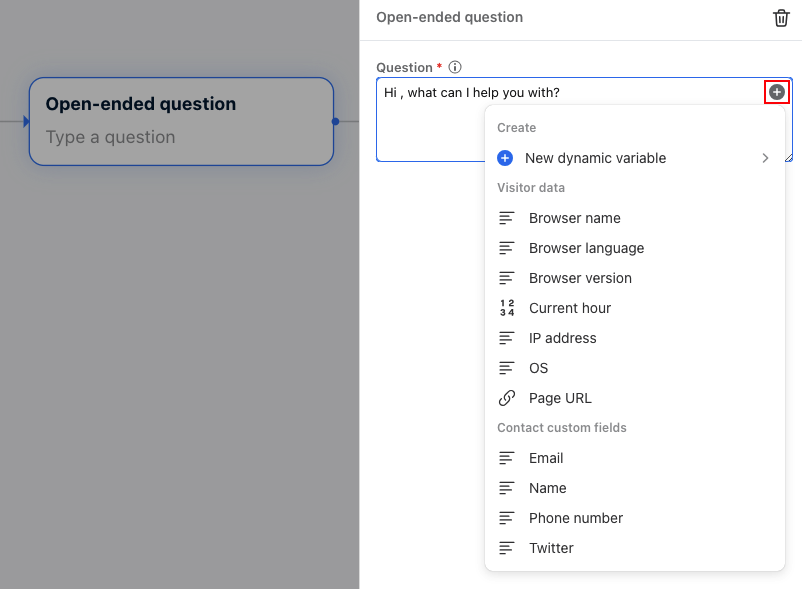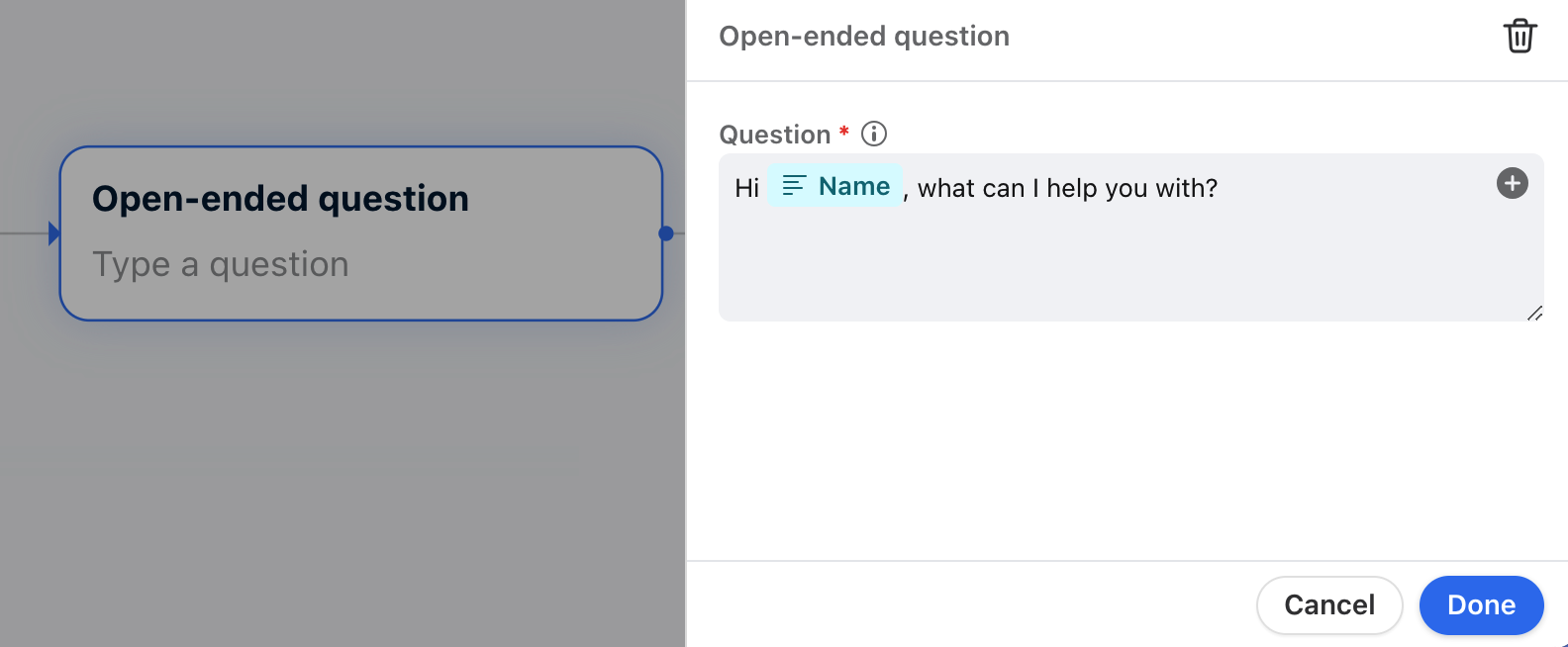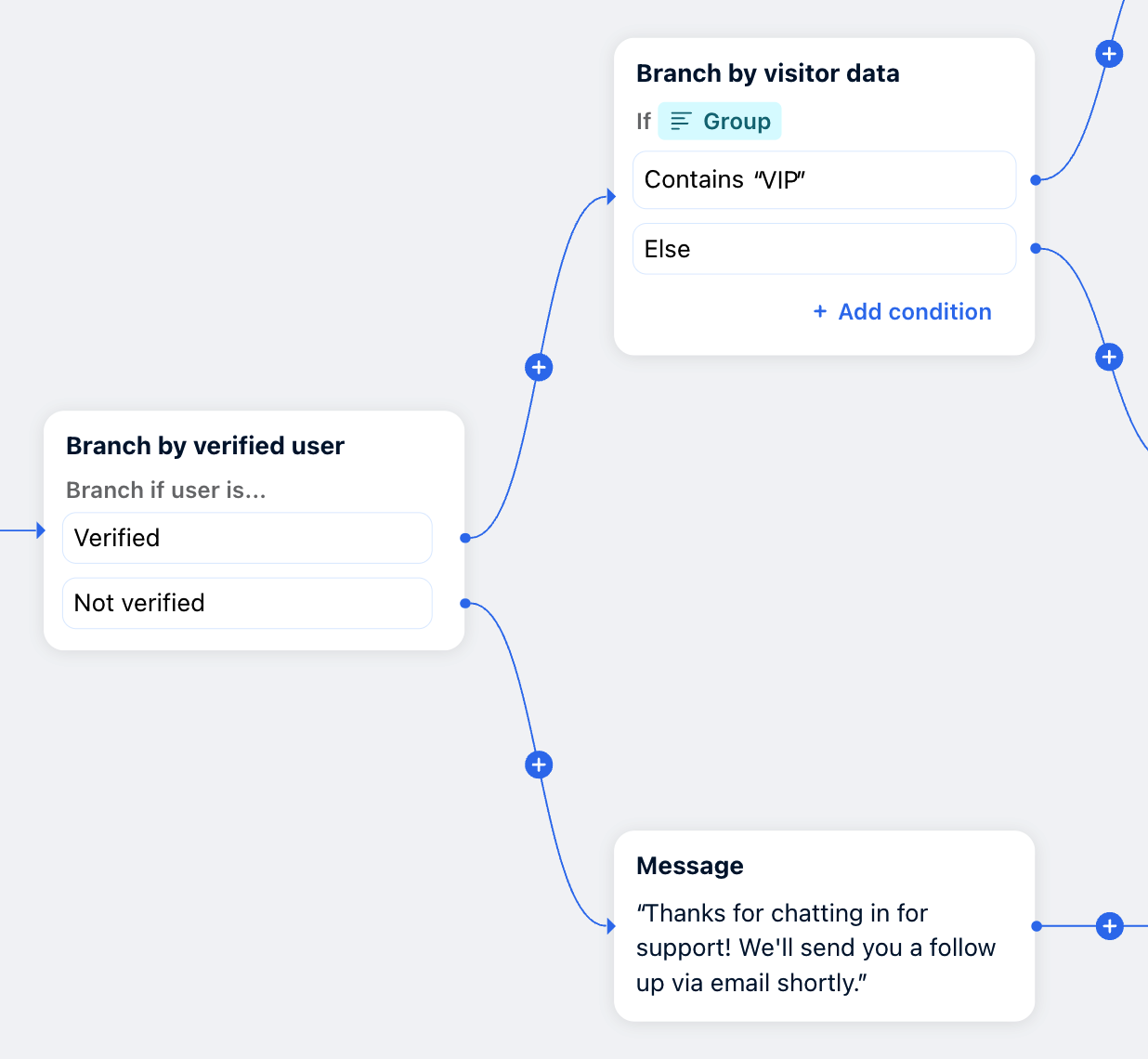Branching by visitor data in chatbots
Overview
Use dynamic variables to branch your chatbot flows based on chat visitor attributes, and personalize chatbot message content for each chat visitor. Besides the default dynamic variables, you can also set up customized dynamic variables to pull from website data or contact data stored in Front to customize your visitor experience.
The benefits of using dynamic variables include:
Enabling faster resolutions and improving deflection
Maximizing the chance the chatbot can fully resolve inquiries without a human touch
Reducing the need for visitors to manually provide information you already know about them
When to use dynamic variables with chatbots
Example use cases where you can personalize your chatbot with dynamic variables:
Visitor website data
If the chatbot senses the visitor’s browser language is French, route them to French-speaking agents.
If the chatbot senses the visitor’s device type such as iOS or Android, direct visitors down the appropriate path.
If your chat visitor URL ends in “/pricing”, then direct visitors to a sales-oriented chatbot path. If the chat visitor URL ends in “/troubleshooting”, then direct visitors to a support-oriented chatbot path.
Contact data from Front
Use a “priority” field to route priority customers to your customer support team, and route non-priority customers to your knowledge base.
Use a “region” field to offer different chatbot branches when company processes vary by geographic location.
Use an “account type” field to offer different chatbot branches by audience (customers, vendors, partners).
How it works
Two dynamic variable features are available in the chatbot flow builder.
Branch by visitor data
Use the Branch by visitor data chatbot step to direct chat visitors down specific branches based on contact fields or chatbot website information.
Insert dynamic variable data into chatbot messages
Personalize your chatbot experience by adding dynamic variable data in your chatbot messages. Supported chatbot steps types: message, open-ended question, multiple choice question.
Option 1: Branch by visitor data
These instructions assume you’re familiar with using chatbots with Front Chat.
Step 1
Navigate to your chatbot flow builder and decide where you want to place your Branch by visitor data step.
Step 2
Click the plus sign, then select Branch by visitor data.
Step 3
Fill in the following fields:
Branch if: Select an default dynamic variable or create a new one
Branches: Add branches based on the text or variables you want to match on
In this example, we’ll use the Page URL variable to branch the chatbot based on the website URL the visitor is chatting in from. We’ll create one branch if the visitor is on the pricing page, and another branch if the visitor is on the help page.
If you don’t see a variable in the dropdown list, it may not be supported in chatbots. See this FAQ to view the list of supported variables.
Step 4
Click Done to add the Branch by visitor data step to your chatbot flow. Continue adding steps to each path in your chatbot flow. Click Save when finished.
In this example:
If a visitor is on the pricing page, the chatbot will add the Sales tag and the visitor will be prompted to write a response
If a visitor is on the help page, the chatbot will add the Support tag and route the visitor to a chat agent
If the visitor is on any other page, the chatbot will ask the visitor for more information
Option 2: Insert a dynamic variable into a message
Step 1
Navigate to a message, open-ended question, or multiple choice question step in your chatbot flow.
Step 2
Click the plus sign in the text box. Select a default variable, or click New dynamic variable to create a new one.
In this example, we’ll select the default Name field to extract the contact’s name.
Step 3
The field will be added to the text box in your chatbot step. Continue editing the chatbot step as needed.
If you don’t see an option when creating your new dynamic variable, it may not be supported in chatbots. See this FAQ to view the list of supported variables.
Step 4
Click Done when you’re finished creating your chatbot step.
FAQ
Which variables are supported?
Contact fields
Branch by visitor data (option 1): All field types are supported for default/custom contact fields and custom account fields.
Insert a dynamic variable into a message (option 2): Only text and number field types are supported for both default/custom contact fields and custom account fields.
See the following articles to review default and custom fields:
Default account fields are not currently supported.
Chat visitor website information
You can use the following information collected from your chatbot:
Field | Example use cases | Example values |
Browser name | Provide browser-specific instructions | Chrome Firefox |
Browser language | Provide instructions in different languages | en-US jp-JP See list of all locales here. |
Browser / mobile app version | Diagnose issues based on the customer’s app version | 13.1.1 15.0.0 |
Current hour | Redirect customers after working hours to a different team in another time zone to ensure it gets handled (Note: The default time zone for the current hour is America/Los Angeles. You can change this in the variable’s settings) | 8 14 |
Date | Serve specific paths based on the day the chat visitor engages with the chatbot (online vs. offline paths) | While you can’t compare directly against the date, you can use transforms like Get hours and Get minutes to compare against numerical values. |
IP address | Close chat for banned IP addresses | 101.123.456.101 127.0.0.1 |
Is mobile device | Provide different instructions for mobile vs. non-mobile devices | True False |
OS | Provide OS-specific instructions | Windows Macintosh Linux |
Page URL | Customize chatbot paths based on the web page your chat visitor initiated the conversation | https://front.com https://yourcompanyhere.com/support |
Much of the visitor information is read from the User-Agent header in the visitor’s browser. You can read more about User-Agent in the official Mozilla documentation.
Can I use a dynamic variable I created in another chatbot flow?
No. Dynamic variables are currently chatbot-specific. You cannot use the same dynamic variable across multiple different chatbots.
How do I set up branches using contact variables?
To use the Branch by visitor data step with contact/account variables, you'll first need to collect contact/account data from your chat visitor. There are two options:
Set up the Verification secret setting in your Front Chat settings to automatically recognize logged in users.
Set up a Collect contact details step before your Branch by visitor data step in your chatbot flow to manually collect contact/account data.
Can I branch by custom contact/account fields?
Yes. You can branch by custom contact or custom account fields in the Branch by visitor step if one of the criteria is met:
The branching step follows a Branch by verified user step AND is on the verified path.
The branching step follows a Collect contact details step that collects the contact/account data from the chat visitor.
The example below meets the requirements for the first criterion.
Pricing
This feature is available on the latest Professional plan or above.

